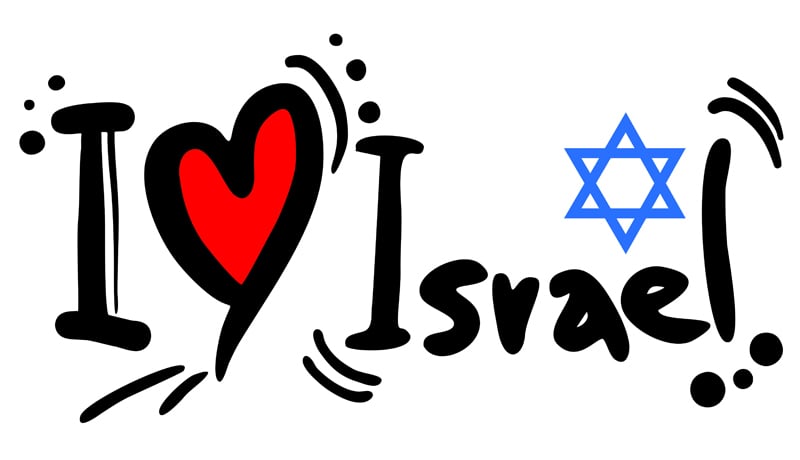As a Jew who made Aliyah from Casablanca, Leah Avraham has a unique Passover tradition that differs greatly from that of most American Jews.
Leah Avraham is a Moroccan Jew who lives in Netanya, Israel, along with her husband and children. As a Jew who made Aliyah from Casablanca, she has a unique Passover tradition that differs greatly from that of most American Jews. There is no matzah ball soup and no gefilte fish at a Moroccan Seder. However, unlike many other members of Sephardic and Mizrahi Jewish communities, Leah Avraham did not grow up eating rice during the Passover Seder, just like the vast majority of Ashkenazi Jews.
Instead, at her Seder, she recalls that her mother would prepare 15 to 20 different kinds of salad, a potato dish with meat inside known as pastallim, pashtida (which is similar to kugel or quiche), lamb served with dried fruits, Moroccan fish, a special soup with Middle Eastern cooked broad beans (ful), tongue, an expensive variety of mushroom known as Truffle (it cost 1,000 NIS per kilo), and numerous other vegetables. All of the most expensive foods were served during Passover, according to Leah.
Anyone who is familiar with the Moroccan kitchen will be able to explain how tasty and special the Moroccan salads are. They include beet salad, fried eggplant salad, baked eggplant salad (which is usually served with tahina), spicy pepper salad, spicy tomato salad, preserved olives, green cabbage salad, purple cabbage salad, potato with olives salad, cucumber salad, egg salad, etc. Leah claimed that no one would walk away from her family’s Seders hungry. The various meets, vegetables and salads were so filling that no one felt that they actually needed chametz (bread products).
In addition to the meal, Moroccan Jews would also eat maror (bitter herbs) and charoset. However, their charoset was different from Iraqi Jews in the sense that they served date paste balls rather than date paste by itself. Each person at a Moroccan Seder would eat one of these charoset balls. However, their marror was lettuce, just like many other Sephardic and Mizrahi Jewish communities. Wonderful matzah would be served as well, which Leah claimed that Leah’s mother made themselves from scratch with the help of relatives. Back in Morocco, Leah had a relative whose job was to make matzah and sell it to other members of the Jewish community.
Leah describes how beautiful the Moroccan Seder table was in her family. Her mother always covered the table with a gorgeous tablecloth and used the best china dishes, which were reserved only for Passover. Seders in her family included about 10 people, eight children plus two parents. They did not include the extended family at their Seders, since their family was enormous and they wanted to be able to do the Seder exquisitely, a task harder to accomplish if there are too many people. The salads and other foods would be arranged nicely onto the table.
The Seder ceremony itself in Leah’s family would be read in a mixture of French and Hebrew. Even though they were from Morocco, the Seder was not read in Moroccan Arabic, thus demonstrating how heavily Moroccan Jews of Leah’s era was influenced by French culture. Like other Mizrahi and Sephardic Seders, no one searched for the hidden afokomin. Yet, the Moroccan Jews possess a unique tradition of taking a Seder plate full of eggs, lamb shanks, marror, charotzet and other items, and spinning it over the Seder participants heads, while proclaiming, “In a hurry we left from Egypt.” The women of the Seder would then shout the traditional Middle Eastern coo la loo. Additionally, Leah asserted that Moroccan Jewish women would have a tradition of taking a young girl at the Seder who hasn’t found a lover yet to spill the leftover wine outside that wasn’t utilized for the Ten Plagues ritual, which was viewed as a blessing that would help her get married.
In sum, Leah has very found memories of celebrating Passover both in Morocco and here in Israel. Back in Morocco, Leah claimed that she lived in a very Jewish area. She lived in a community of houses that were all adjacent to each other and connected to a synagogue, like a mini-village. In this community, every one helped each other. In her area of Casablanca, even Arab shop owners would kosher things around Passover so that they would not lose Jewish customers over the holidays. Both in Morocco and here in Israel, her family would have a BBQ the day after the Seder and then, immediately after the Seder, Leah shared that the Moroccan Jewish women would immediately start preparing for Mimouna, the Moroccan Jewish pastry holiday which concludes Passover.
By Rachel Avraham


Do You Love Israel? Make a Donation - Show Your Support!
Donate to vital charities that help protect Israeli citizens and inspire millions around the world to support Israel too!
Now more than ever, Israel needs your help to fight and win the war -- including on the battlefield of public opinion.
Antisemitism, anti-Israel bias and boycotts are out of control. Israel's enemies are inciting terror and violence against innocent Israelis and Jews around the world. Help us fight back!
